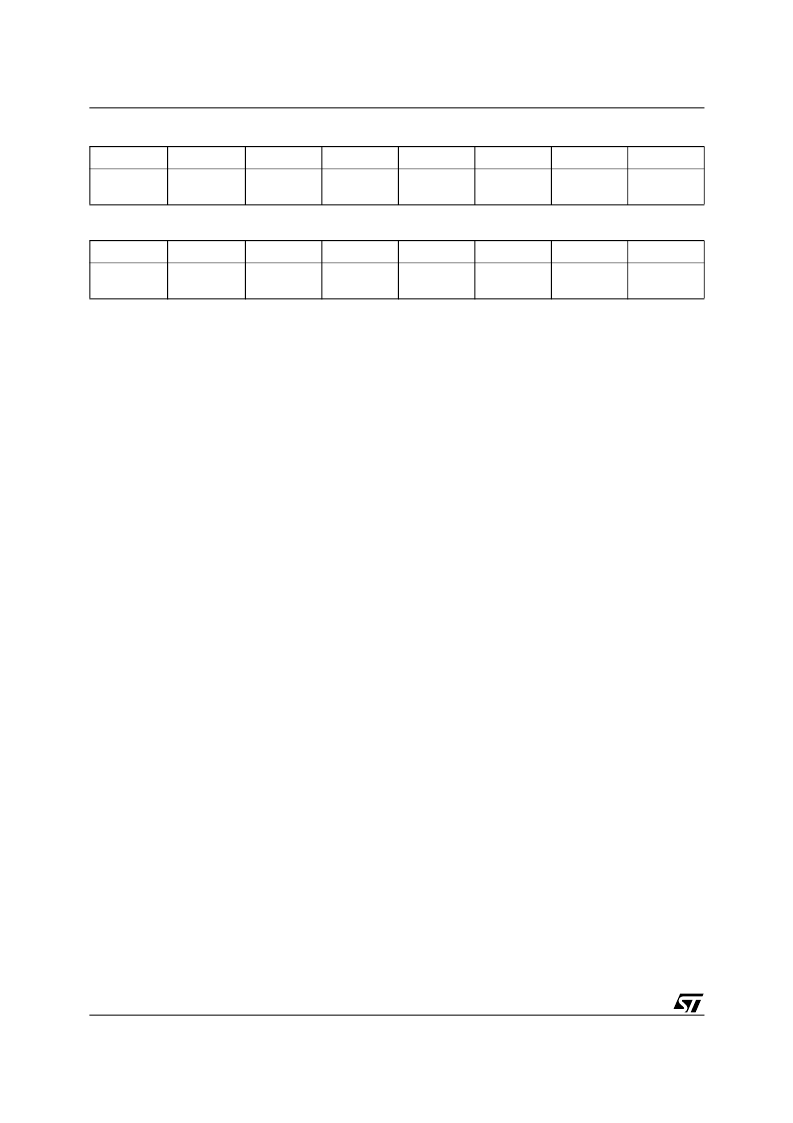- 您現(xiàn)在的位置:買賣IC網(wǎng) > PDF目錄368224 > PSD4235G1V-12U (意法半導(dǎo)體) Flash In-System-Programmable Peripherals for 16-Bit MCUs PDF資料下載
參數(shù)資料
| 型號(hào): | PSD4235G1V-12U |
| 廠商: | 意法半導(dǎo)體 |
| 英文描述: | Flash In-System-Programmable Peripherals for 16-Bit MCUs |
| 中文描述: | Flash在系統(tǒng)可編程外設(shè)的16位微控制器 |
| 文件頁(yè)數(shù): | 24/89頁(yè) |
| 文件大小: | 703K |
| 代理商: | PSD4235G1V-12U |
第1頁(yè)第2頁(yè)第3頁(yè)第4頁(yè)第5頁(yè)第6頁(yè)第7頁(yè)第8頁(yè)第9頁(yè)第10頁(yè)第11頁(yè)第12頁(yè)第13頁(yè)第14頁(yè)第15頁(yè)第16頁(yè)第17頁(yè)第18頁(yè)第19頁(yè)第20頁(yè)第21頁(yè)第22頁(yè)第23頁(yè)當(dāng)前第24頁(yè)第25頁(yè)第26頁(yè)第27頁(yè)第28頁(yè)第29頁(yè)第30頁(yè)第31頁(yè)第32頁(yè)第33頁(yè)第34頁(yè)第35頁(yè)第36頁(yè)第37頁(yè)第38頁(yè)第39頁(yè)第40頁(yè)第41頁(yè)第42頁(yè)第43頁(yè)第44頁(yè)第45頁(yè)第46頁(yè)第47頁(yè)第48頁(yè)第49頁(yè)第50頁(yè)第51頁(yè)第52頁(yè)第53頁(yè)第54頁(yè)第55頁(yè)第56頁(yè)第57頁(yè)第58頁(yè)第59頁(yè)第60頁(yè)第61頁(yè)第62頁(yè)第63頁(yè)第64頁(yè)第65頁(yè)第66頁(yè)第67頁(yè)第68頁(yè)第69頁(yè)第70頁(yè)第71頁(yè)第72頁(yè)第73頁(yè)第74頁(yè)第75頁(yè)第76頁(yè)第77頁(yè)第78頁(yè)第79頁(yè)第80頁(yè)第81頁(yè)第82頁(yè)第83頁(yè)第84頁(yè)第85頁(yè)第86頁(yè)第87頁(yè)第88頁(yè)第89頁(yè)

PSD4235G2
24/89
Table 30. Status Bits
Table 31. Status Bits for Motorola
Note: 1. X = Not guaranteed value, can be read either 1 or 0.
2. DQ15-DQ0 represent the Data Bus bits, D15-D0.
3. FS0-FS7/CSBOOT0-CSBOOT3 are active High.
Data Polling (
DQ7) – DQ15 for Motorola.
When erasing or programming in Flash memory,
the Data Polling (DQ7/DQ15) bit outputs the com-
plement of the bit being entered for programming/
writing on the DQ7/DQ15 bit. Once the Program
instruction or the Write operation is completed, the
true logic value is read on the Data Polling (DQ7/
DQ15) bit (in a Read operation).
I
Data Polling is effective after the fourth Write
pulse (for a Program instruction) or after the
sixth Write pulse (for an Erase instruction). It
must be performed at the address being
programmed or at an address within the Flash
memory sector being erased.
I
During an Erase cycle, the Data Polling (DQ7/
DQ15) bit outputs a 0. After completion of the
cycle, the Data Polling (DQ7/DQ15) bit outputs
the last bit programmed (it is a 1 after erasing).
I
If the location to be programmed is in a
protected Flash memory sector, the instruction
is ignored.
I
If all the Flash memory sectors to be erased are
protected, the Data Polling (DQ7/DQ15) bit is
reset to 0 for about 100 μs, and then returns to
the value from the previously addressed
location. No erasure is performed.
Toggle Flag (DQ6)
– DQ14 for Motorola.
The
PSD offers another way for determining when the
Flash memory Program cycle is completed. During
the internal Write operation and when either FS0-
FS7 or CSBOOT0-CSBOOT3 is true, the Toggle
Flag (DQ6/DQ14) bit toggles from 0 to 1 and 1 to
0 on subsequent attempts to read any word of the
memory.
When the internal cycle is complete, the toggling
stops and the data read on the Data Bus D0-D7 is
the value from the addressed memory location.
The device is now accessible for a new Read or
Write operation. The cycle is finished when two
successive Reads yield the same output data.
I
The Toggle Flag (DQ6/DQ14) bit is effective
after the fourth Write pulse (for a Program
instruction) or after the sixth Write pulse (for an
Erase instruction).
I
If the location to be programmed belongs to a
protected Flash memory sector, the instruction
is ignored.
I
If all the Flash memory sectors selected for
erasure are protected, the Toggle Flag (DQ6/
DQ14) bit toggles to 0 for about 100 μs and then
returns to the value from the previously
addressed location.
Error Flag (DQ5)
– DQ13 for Motorola.
During
a normal Program or Erase cycle, the Error Flag
(DQ5/DQ13) bit is reset to 0. This bit is set to 1
when there is a failure during a Flash memory Pro-
gram, Sector Erase, or Bulk Erase cycle.
In the case of Flash memory programming, the Er-
ror Flag (DQ5/DQ13) bit indicates the attempt to
program a Flash memory bit, or bits, from the pro-
grammed state, 0, to the erased state, 1, which is
not a valid operation. The Error Flag (DQ5/DQ13)
bit may also indicate a Time-out condition while at-
tempting to program a word.
In case of an error in a Flash memory Sector Erase
or Word Program cycle, the Flash memory sector
in which the error occurred or to which the pro-
grammed location belongs must no longer be
used. Other Flash memory sectors may still be
used. The Error Flag (DQ5/DQ13) bit is reset after
a Reset instruction. A Reset instruction is required
after detecting an error on the Error Flag (DQ5/
DQ13) bit.
Erase Time-out Flag (DQ3) – DQ11 for Motoro-
la.
The Erase Time-out Flag (DQ3/DQ11) bit re-
flects the time-out period allowed between two
consecutive Sector Erase instructions. The Erase
Time-out Flag (DQ3/DQ11) bit is reset to 0 after a
DQ7
DQ6
DQ5
DQ4
DQ3
DQ2
DQ1
DQ0
Data Polling
Toggle Flag
Error Flag
X
Erase Time-
out
X
X
X
DQ15
DQ14
DQ13
DQ12
DQ11
DQ10
DQ9
DQ8
Data Polling
Toggle Flag
Error Flag
X
Erase Time-
out
X
X
X
相關(guān)PDF資料 |
PDF描述 |
|---|---|
| PSD4235G1V-12UI | Flash In-System-Programmable Peripherals for 16-Bit MCUs |
| PSD4235G1-C-70U | CAP 0.33UF 25V 10% TANT SMD-3216-18 TR-13-PL SN100% |
| PSD4235G1-C-70UI | Flash In-System-Programmable Peripherals for 16-Bit MCUs |
| PSD4235F2-20MI | Flash In-System Programmable ISP Peripherals For 16-bit MCUs 5V Supply |
| PSD4235F2-20U | Flash In-System-Programmable Peripherals for 16-Bit MCUs |
相關(guān)代理商/技術(shù)參數(shù) |
參數(shù)描述 |
|---|---|
| PSD4235G2-70U | 功能描述:SPLD - 簡(jiǎn)單可編程邏輯器件 5.0V 4M 70ns RoHS:否 制造商:Texas Instruments 邏輯系列:TICPAL22V10Z 大電池?cái)?shù)量:10 最大工作頻率:66 MHz 延遲時(shí)間:25 ns 工作電源電壓:4.75 V to 5.25 V 電源電流:100 uA 最大工作溫度:+ 75 C 最小工作溫度:0 C 安裝風(fēng)格:Through Hole 封裝 / 箱體:DIP-24 |
| PSD4235G2-90U | 功能描述:CPLD - 復(fù)雜可編程邏輯器件 5.0V 4M 90ns RoHS:否 制造商:Lattice 系列: 存儲(chǔ)類型:EEPROM 大電池?cái)?shù)量:128 最大工作頻率:333 MHz 延遲時(shí)間:2.7 ns 可編程輸入/輸出端數(shù)量:64 工作電源電壓:3.3 V 最大工作溫度:+ 90 C 最小工作溫度:0 C 封裝 / 箱體:TQFP-100 |
| PSD4235G2-90UI | 功能描述:CPLD - 復(fù)雜可編程邏輯器件 5.0V 4M 90ns RoHS:否 制造商:Lattice 系列: 存儲(chǔ)類型:EEPROM 大電池?cái)?shù)量:128 最大工作頻率:333 MHz 延遲時(shí)間:2.7 ns 可編程輸入/輸出端數(shù)量:64 工作電源電壓:3.3 V 最大工作溫度:+ 90 C 最小工作溫度:0 C 封裝 / 箱體:TQFP-100 |
| PSD4235G2V-12UI | 功能描述:CPLD - 復(fù)雜可編程邏輯器件 3.3V 4M 120ns RoHS:否 制造商:Lattice 系列: 存儲(chǔ)類型:EEPROM 大電池?cái)?shù)量:128 最大工作頻率:333 MHz 延遲時(shí)間:2.7 ns 可編程輸入/輸出端數(shù)量:64 工作電源電壓:3.3 V 最大工作溫度:+ 90 C 最小工作溫度:0 C 封裝 / 箱體:TQFP-100 |
| PSD4235G2V-90U | 功能描述:CPLD - 復(fù)雜可編程邏輯器件 3.3V 4M 90ns RoHS:否 制造商:Lattice 系列: 存儲(chǔ)類型:EEPROM 大電池?cái)?shù)量:128 最大工作頻率:333 MHz 延遲時(shí)間:2.7 ns 可編程輸入/輸出端數(shù)量:64 工作電源電壓:3.3 V 最大工作溫度:+ 90 C 最小工作溫度:0 C 封裝 / 箱體:TQFP-100 |
發(fā)布緊急采購(gòu),3分鐘左右您將得到回復(fù)。